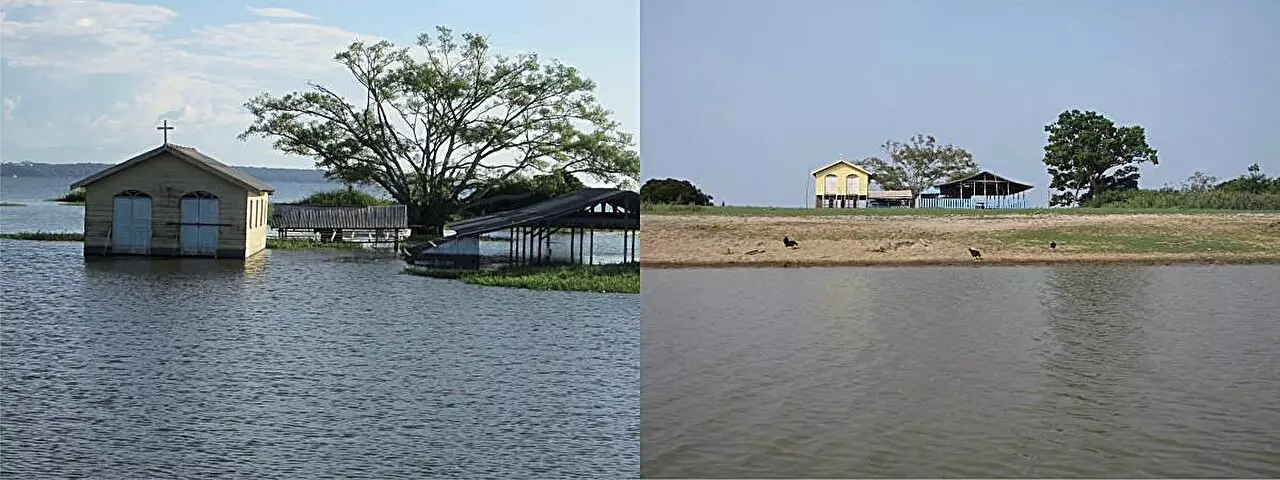The Amazon Rainforest, often referred to as the lungs of our planet, plays a critical role in the climate system through its interactions with greenhouse gases, particularly methane. A recent study by researchers at the University of São Paulo (USP) indicates that climate change’s extreme temperatures and altered rainfall patterns are projected to exacerbate methane production in flooded areas while simultaneously diminishing methane uptake in upland forests. These findings underscore the urgency for effective conservation and management policies tailored to mitigate climate change’s impact on this vital ecosystem.
The Role of the Amazon in Global Methane Emissions
The importance of the Amazon cannot be overstated. Covering vast areas along significant waterways, over 800,000 square kilometers of its floodplains are inundated for at least six months each year due to heavy rainfall and rising river levels. This unique environment is conducive to methane production as diverse microbial communities break down organic matter in these waterlogged soils. The study from USP reveals an alarming reality: floodplains in the Amazon may contribute as much as 29% of global wetland methane emissions. Whereas floodplains serve as methane sources, the upland forests demonstrate a contrasting role as sinks, efficiently sequestering this greenhouse gas from the atmosphere.
Hence, the dual roles played by varying Amazonian ecosystems in the methane cycle are pivotal in understanding how global methane dynamics may evolve with climate change. The anticipated shift in moisture and temperature patterns due to climate change raises pressing questions about the future functionality of these ecosystems.
Researchers conducted a comprehensive 30-day experiment, examining soil samples from two floodplains and an upland forest in the Pará state of Brazil. They subjected these samples to laboratory conditions mimicking extreme temperatures and humidity levels. Overall, the study found no significant changes in methane emission rates from the floodplains, yet there was a notable increase in the abundance of methane-producing microorganisms. This is troubling because it suggests a potential for increased future methane emissions as the climate continues to warm.
Conversely, the upland forest microbiome exhibited significant vulnerability; under warm and dry conditions, the consumption of methane by soil microorganisms plummeted by a staggering 70%. This discrepancy suggests that while floodplain microorganisms can adapt to shifting climatic conditions, upland forest microorganisms are not as resilient. Such differential responses could tilt the balance of greenhouse gas emissions towards higher concentrations of methane in the atmosphere.
The ramifications of these findings could be dire. Methane is a greenhouse gas with a global warming potential many times that of carbon dioxide, thus its increase in the atmosphere can exacerbate the ongoing climate crisis significantly. With atmospheric methane levels having risen about 18% over the last 40 years, the evidence from USP amplifies concerns over how similar trends will escalate in the Amazon. As the rainforest continues to grapple with climate change, understanding the dynamics of methane cycling becomes increasingly crucial in assessing the Amazon’s role in global climate regulation.
Furthermore, the study indicates the emergence of methanotrophic microorganisms that utilize methane as an energy source. While this presents a glimmer of hope—suggesting some capacity to offset increased methane production—the sheer potential for imbalance between methane production and consumption mechanisms remains a critical issue to explore further.
The findings of this research bring forth an urgent call to action for effective environmental policy formulation. Researchers advocate that the understanding garnered from this study should guide the development of strategies to protect both floodplain and upland forest ecosystems in the Amazon. Conservation efforts must be enhanced to mitigate adverse effects induced by climate change, thereby preserving the integrity of these ecosystems and their essential functions in greenhouse gas regulation.
While the Amazon is grappling with the immediate challenges posed by climate change, the intricate relationship between methane-producing and methane-consuming microbial communities provides profound insights into the larger environmental puzzle. As we stand at a critical juncture in climate action, prioritizing the health of the Amazon through conservation and research initiatives is not merely beneficial—it is imperative for the well-being of our planet. The fate of not only this iconic ecosystem but also global climate stability hangs in the balance, and decisive actions are required now more than ever.


Leave a Reply